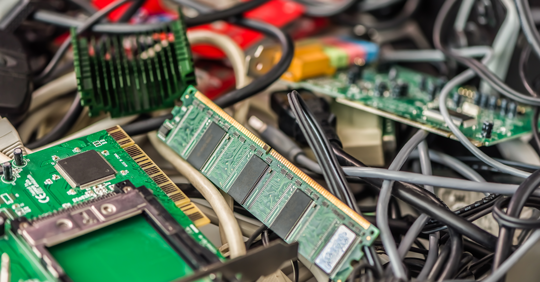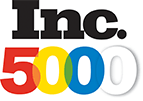Examining E-Waste: The Silent Threat To Environmental Sustainability

This past month at the DISASSEMBLY: BROOKLYN art show in New York City, Liquid Technology Manager, Michael Cappuccilli joined Brooklyn artist, Wiena Lin, and representatives from the U.S. Environmental Protection Agency, MIT Senseable City Lab, and Basel Action Network to explore the true cost of affordable consumer electronics. The panel, “Design and the E-Waste Crisis,” took place on August 16, 2018 to educate attendees regarding the negative impact that obsolete electronics have on the environment.
DISASSEMBLY: BROOKLYN is a site-specific, participatory installation that examines consumer electronics through the lens of sustainability and global social justice. The artwork explores the untold story of the consumer electronics lifecycle, and the devastating environmental and labor conditions of offshore recycling. As the event’s closing panel, this discussion helped to generate awareness of the toxic devastation caused by electronic waste around the world, while providing information regarding how consumers can help by changing their behavior.
Recognizing this need, Liquid Technology has taken steps to ensure its customers’ electronic waste is properly disposed of using the appropriate channels. The company provides a suite of effective, impartial solutions to help companies manage their excess technology by destroying data and mitigating the risk of recycling liability by recommending and executing deliberate plans of action for e-waste disposal.
Michael shared, “I can give you an example. Let’s say an LCD screen is broken. This equipment then comes into our warehouse from our clients, where we test everything we can to make sure it’s functioning. If it is not functioning or has no reuse value, we will send it to our downstream recycling partners, which are all e-Steward audited for certain commodities that were sent to them. In addition, given that a broken LCD monitor contains hazardous waste, we package it in a bin called a gaylord in which it’s lined in about an 8-millimeter plastic liner. When this is filled up we send it out.”
As the evolving IT landscape continues to produce inordinate amounts of electronic waste as a result of the proliferation of Big Data, IoT, and AI computing, it has become critical that individuals around the world are made aware of safe and reliable methods of e-waste disposal. As specialists in the disposal of electronic waste for its enterprise customers, Liquid Technology safely removed more than 1.5 million pounds of unwanted devices and infrastructure in 2017 alone utilizing the safest measures.
However, as Michael shared during the panel discussion, it can be difficult to maintain profitability when implementing the necessary steps for responsible and effective e-waste disposal, leading many companies to make decisions that could ultimately hurt the environment. “I think that may be a lot of smaller entrepreneurs try to get into this and think ‘I can make some money out of other people’s garbage,’” he stated. “That will often lead to improper waste and recycling in order to cut costs and make money.”
In response to this issue, Michael believes it will be important that new programs and potentially government legislation make it easier for enterprises to dispose of electronics in a way that is safe and affordable to maintain profitability while instilling a greater sense of environmental responsibility.
To learn more about Liquid Technology and how it is doing its part to mitigate the damage caused by e-waste, visit http://www.liquidtechnology.net/e-waste-recycling/.
Post originally posted via Data Center Post


